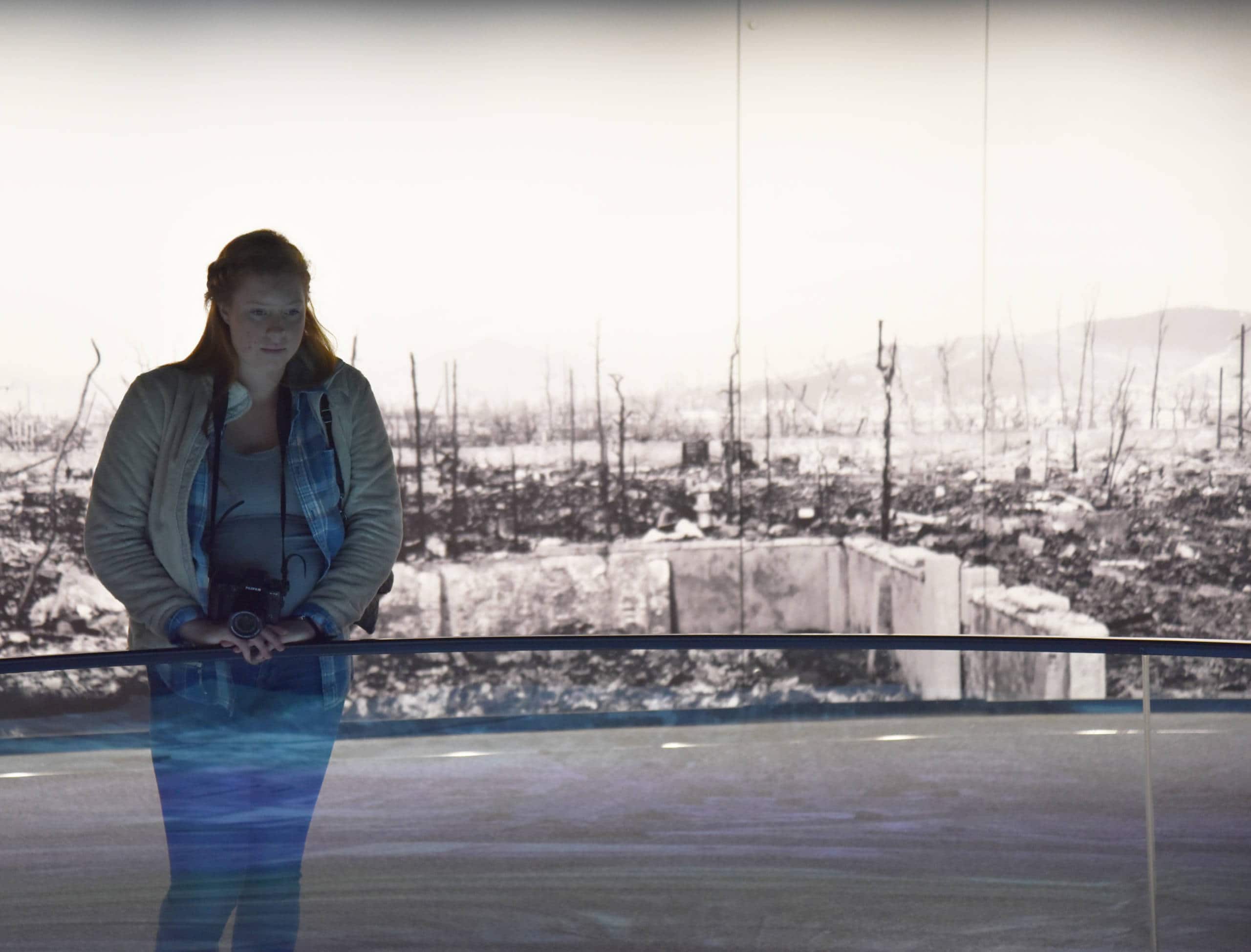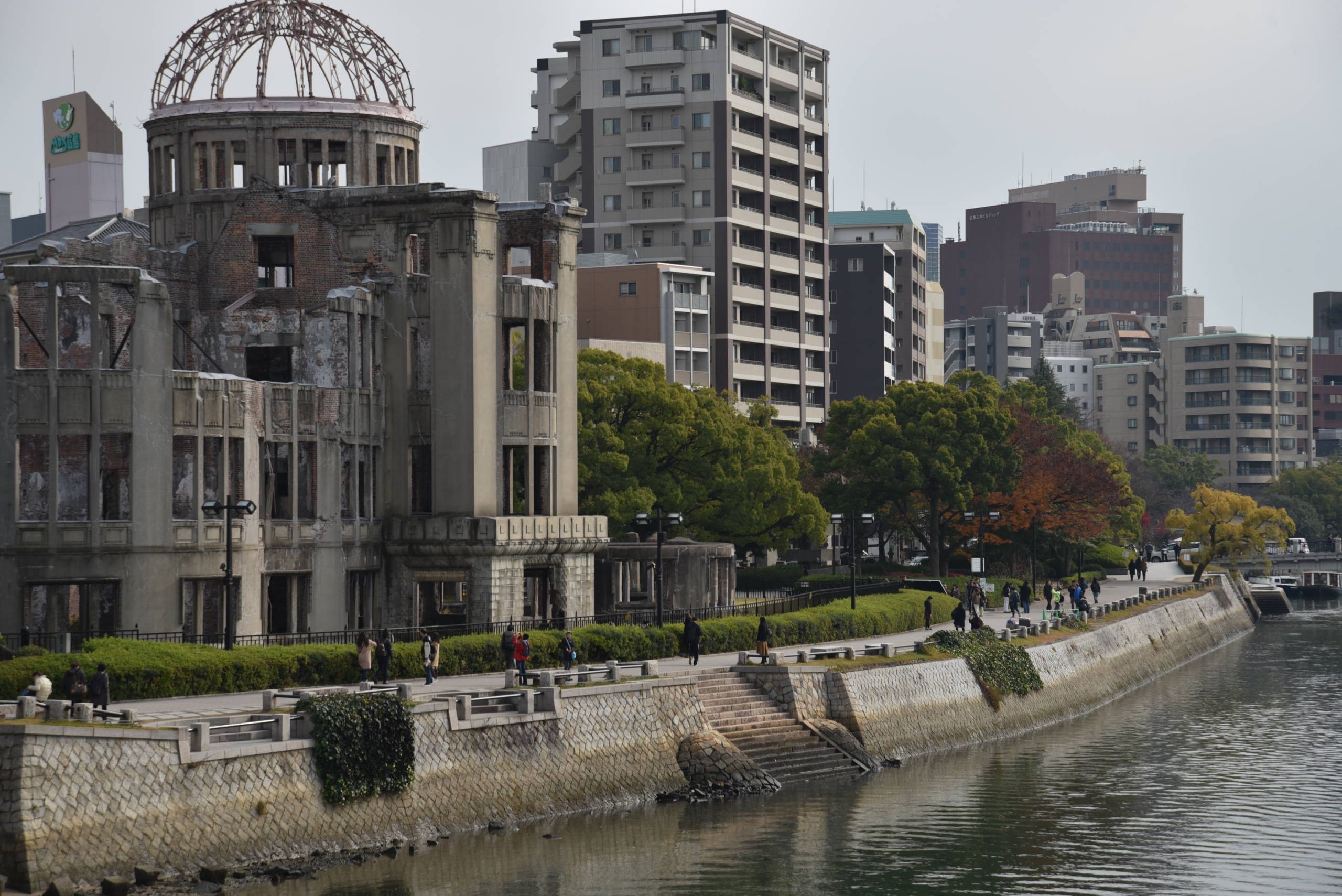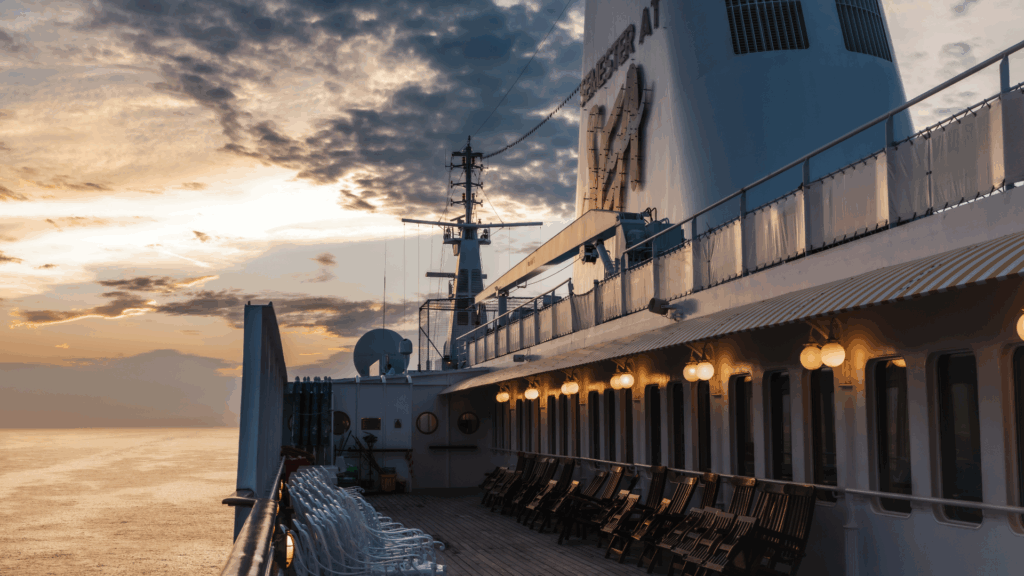
In between visits to ancient castles, Shinto temples, and sushi restaurants, Fall 2017 Voyagers taking part in the Hiroshima & Himeji overnight field program paused at the Hiroshima Peace Park and Museum to reflect on the complicated history between Japan and the United States.
The Peace Park, which commemorates the dropping of the Nuclear Bomb “Little Boy” on August 6, 1945, lies close to “ground zero” of where the bomb struck. Today, the area features a beautiful park and museum, as well as multiple monuments to the victims and survivors of the bombing.
Prior to arriving in Japan, voyagers attended an evening seminar led by Fall 2017 Academic Dean John Olieynk, Professor of History at St. Joseph’s College of Maine Michael Connolly, and gap-year student Joana Zubor. The lecture provided plenty for students to think about as the explored Hiroshima park , the ongoing arguments for and against employing a nuclear weapon, the effect of the bomb on Japan, World War 2, and world history, and the history of nuclear proliferation and current efforts at disarmament.
Dr. Connolly, who is also teaching a course in Pacific Wars during the voyage, spoke about the complicated decision to drop atomic bombs, and how conflicted academics, historians, and students still are today.
“The vast majority of young Americans and American students are horrified, as most Americans are, by the horrors of a nuclear war and nuclear bombs and the effect that it had,” Dr. Connolly said upon Fall 2017’s return to the MV World Odyssey. “I think that to look at it from a historical point of view, how an American president and American military and American country felt justified, at that time, in using those weapons, goes a little ways toward taking away the demonization they might have felt about America in its decision to drop two atomic bombs.”

Discussing the decision and effects of the two bombs in an academic setting beforehand was valuable, because the peace park itself took the history of Hiroshima and showed voyagers how the bomb affected Japanese men, women, and children personally. Prominent in the museum were stories from survivors, including video testimony, clothing photos of Japanese affected, and diary entries.
Another large theme within the peace park is the ongoing commitment to the end of warfare and the disarmament of nuclear powers around the world. Voyager Andrew Yost found the Peace Clock Tower, which tracks how close humanity is to both eliminating nuclear weapons or, conversely, to seeing the proliferation of nuclear weapons again rise, of particular interest.
The inscription of the Peace Clock Tower ends with a call to peaceful coexistence: “To stop the cog wheels from spinning, we must work towards abolishing all nuclear weapons, and seek for an age of coexistence among human kind without dependence on military force.”
Yost, a veteran of the U.S. Armed Forces currently attending Colorado State University, considered the message of the Peace Clock Tower in the days after Fall 2017’s return.
“The last line hits me the strongest. It brought me to a point where I realized that if I didn’t serve in the military, I wouldn’t be reading this,” Yost said. “I understand the peace part, but I didn’t want to see the abolishment of the military. But one day it needs to happen. Because if it doesn’t, our world could be two-and-a-half days away from destroying itself.”
By engaging with the history of Hiroshima, and the continued threat nuclear weapons pose in today, Yost used his background as a service member, college student, and Semester at Sea Voyager to consider the meaning of the military and the purpose of visiting a place like Hiroshima.
“There’s a thing in the military, where when you’re watching over your brothers and sisters at arms, specifically during the night, called firewatch,” Yost said. “The reason that I bring that up is there is also a peace flame at the memorial, and it stated that the flame will go out as soon as the world finds peace and there is no more threat of nuclear warfare, or even warfare for that matter.”
“The reason I bring that up is you can be relieved from your firewatch, you’re relieved from watching over your brothers and sisters, you are relieved to go to rest. When I saw the peace flame, and the idea of it going out, it made me think that there is no more firewatch, and no more need for the military. And that was beautiful in a sense.”


